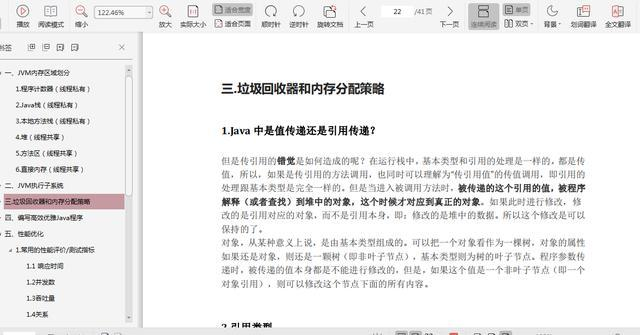什么是 Redis?
- Redis 是一个开源的内存数据库,支持多种数据结构,包括字符串、列表、集合、哈希和有序集合。由于 Redis 运行在内存中,读写速度极快,常被用于构建缓存系统、实时排行榜、会话存储和消息队列等高并发场景下的服务。
- 在这篇博客中,我们将介绍如何使用 Go 语言集成 Redis,构建高效的缓存和消息队列系统。
安装 Redis
- 安装 Redis: 你可以通过以下命令安装 Redis(适用于 Linux 和 macOS):
sudo apt-get install redis-server
- 或者通过 Homebrew 安装:
brew install redis
启动 Redis 服务
redis-server
验证安装
- 可以通过以下命令进入 Redis CLI,验证 Redis 是否正常运行
redis-cli
安装 Go Redis 客户端
- 在 Go 项目中,我们将使用 go-redis/redis 这个流行的 Redis 客户端库。你可以通过以下命令安装:
go get github.com/go-redis/redis/v8
连接 redis
rdb := redis.NewClient(&redis.Options{
Addr: "localhost:6379",
Password: "",
DB: 0,
})
string 类型
- set 设置 string 的值
func TestSetKey(t *testing.T) {
ctx := context.Background()
rdb := redis.NewClient(&redis.Options{
Addr: "localhost:6379",
Password: "",
DB: 0,
})
err := rdb.Set(ctx, "name", "hello world", time.Second*1000).Err()
if err != nil {
panic(err)
}
fmt.Println("设置值成功")
}
- get 获取 string 的值
func TestGetKey(t *testing.T) {
ctx := context.Background()
rdb := redis.NewClient(&redis.Options{
Addr: "localhost:6379",
Password: "",
DB: 0,
})
result, err := rdb.Get(ctx, "name").Result()
if err != nil {
panic(err)
}
fmt.Println("result", result)
}
- getset 获取到的值是上一次的值
func TestGetSet(t *testing.T) {
ctx := context.Background()
rdb := redis.NewClient(&redis.Options{
Addr: "localhost:6379",
Password: "",
DB: 0,
})
result, err := rdb.GetSet(ctx, "name", "hello world").Result()
if err != nil {
panic(err)
}
fmt.Println(result)
}
- setnx 如果值存在则不设置,如果不存在则设置
func TestSetNx(t *testing.T) {
ctx := context.Background()
rdb := redis.NewClient(&redis.Options{
Addr: "localhost:6379",
Password: "",
DB: 0,
})
err := rdb.SetNX(ctx, "name", "hello set nex", time.Second*1000).Err()
if err != nil {
panic(err)
}
}
- mget 批量获取值
func TestMGet(t *testing.T) {
ctx := context.Background()
rdb := redis.NewClient(&redis.Options{
Addr: "localhost:6379",
Password: "",
DB: 0,
})
result, err := rdb.MGet(ctx, "name", "k1", "k2").Result()
if err != nil {
panic(err)
}
fmt.Println(result)
}
- 批量设置
func TestMSet(t *testing.T) {
ctx := context.Background()
rdb := redis.NewClient(&redis.Options{
Addr: "localhost:6379",
Password: "",
DB: 0,
})
err := rdb.MSet(ctx, "k1", "value1", "k2", "value2", "k3", "value3").Err()
if err != nil {
panic(err)
}
}
- 自增
// 自增
func TestIncrBy(t *testing.T) {
ctx := context.Background()
rdb := redis.NewClient(&redis.Options{
Addr: "localhost:6379",
Password: "",
DB: 0,
})
result, err := rdb.IncrBy(ctx, "money", 1).Result()
if err != nil {
panic(err)
}
fmt.Println(result)
}
- 自减
func TestDecrBy(t *testing.T) {
ctx := context.Background()
rdb := redis.NewClient(&redis.Options{
Addr: "localhost:6379",
Password: "",
DB: 0,
})
val, err := rdb.DecrBy(ctx, "money", 1).Result()
if err != nil {
panic(err)
}
fmt.Println(val)
}
- 删除
func TestDel(t *testing.T) {
ctx := context.Background()
rdb := redis.NewClient(&redis.Options{
Addr: "localhost:6379",
Password: "",
DB: 0,
})
err := rdb.Del(ctx, "k1").Err()
if err != nil {
panic(err)
}
}
- 设置过期时间
func TestExpire(t *testing.T) {
ctx := context.Background()
rdb := redis.NewClient(&redis.Options{
Addr: "localhost:6379",
Password: "",
DB: 0,
})
rdb.Expire(ctx, "key2", 1000*time.Second)
}
哈希类型
- HSet 设置哈希值
func TestHSet(t *testing.T) {
ctx := context.Background()
rdb := redis.NewClient(&redis.Options{
Addr: "localhost:6379",
Password: "",
DB: 0,
})
result, err := rdb.Ping(ctx).Result()
if err != nil {
panic(err)
}
t.Log(result)
err = rdb.HSet(ctx, "user", "name", "张德志").Err()
if err != nil {
panic(err)
}
t.Log("设置hash成功")
}
- HGet 获取哈希值
func TestHGet(t *testing.T) {
ctx := context.Background()
rdb := redis.NewClient(&redis.Options{
Addr: "localhost:6379",
Password: "",
DB: 0,
})
_, err := rdb.Ping(ctx).Result()
if err != nil {
panic(err)
}
t.Logf("连接数据库成功")
result, err1 := rdb.HGet(ctx, "user", "name").Result()
if err1 != nil {
panic(err1)
}
t.Logf("获取值:%s", result)
}
- TestHGetAll 获取所有哈希值
func TestHGetAll(t *testing.T) {
var err error
ctx := context.Background()
rdb := redis.NewClient(&redis.Options{
Addr: "127.0.0.1:6379",
DB: 0,
})
_, err = rdb.Ping(ctx).Result()
if err != nil {
panic(err)
}
t.Log("连接数据库成功")
result, err1 := rdb.HGetAll(ctx, "user").Result()
if err1 != nil {
panic(err1)
}
t.Log(result)
}
- HIncrBy 哈希累加
func TestHIncrBy(t *testing.T) {
var err error
ctx := context.Background()
rdb := redis.NewClient(&redis.Options{
Addr: "localhost:6379",
Password: "",
DB: 0,
})
_, err = rdb.Ping(ctx).Result()
if err != nil {
panic(err)
}
t.Log("数据库连接成功")
count, err1 := rdb.HIncrBy(ctx, "user", "count", 2).Result()
if err1 != nil {
panic(err1)
}
t.Log(count)
}
- HKeys 获取所有 keys
func TestHKeys(t *testing.T) {
var err error
ctx := context.Background()
rdb := redis.NewClient(&redis.Options{
Addr: "localhost:6379",
Password: "",
DB: 0,
})
_, err = rdb.Ping(ctx).Result()
if err != nil {
panic(err)
}
t.Log("连接数据库成功")
keys, err1 := rdb.HKeys(ctx, "user").Result()
if err1 != nil {
panic(err)
}
t.Log(keys)
}
- HLen 查询字段数量
func TestHLen(t *testing.T) {
var err error
ctx := context.Background()
rdb := redis.NewClient(&redis.Options{
Addr: "localhost:6379",
Password: "",
DB: 0,
})
_, err = rdb.Ping(ctx).Result()
if err != nil {
panic(err)
}
t.Log("连接数据库成功")
result, err1 := rdb.HLen(ctx, "user").Result()
if err1 != nil {
panic(err1)
}
t.Log(result)
}
- HMGet 批量获取
func TestMGet(t *testing.T) {
var err error
ctx := context.Background()
rdb := redis.NewClient(&redis.Options{
Addr: "localhost:6379",
Password: "",
DB: 0,
})
_, err = rdb.Ping(ctx).Result()
if err != nil {
panic(err)
}
result, err1 := rdb.HMGet(ctx, "user", "name", "count").Result()
if err1 != nil {
panic(err)
}
t.Log(result)
}
- HMSet 批量设置
func TestHMSet(t *testing.T) {
var err error
ctx := context.Background()
rdb := redis.NewClient(&redis.Options{
Addr: "localhost:6379",
Password: "",
DB: 0,
})
_, err = rdb.Ping(ctx).Result()
if err != nil {
panic(err)
}
data := make(map[string]interface{})
data["name"] = "周华建"
data["age"] = 44
data["gender"] = "男"
err = rdb.HMSet(ctx, "user", data).Err()
if err != nil {
panic(err)
}
}
- HDel 删除值
func TestHDel(t *testing.T) {
var err error
ctx := context.Background()
rdb := redis.NewClient(&redis.Options{
Addr: "localhost:6379",
Password: "",
DB: 0,
})
_, err = rdb.Ping(ctx).Result()
if err != nil {
panic(err)
}
err = rdb.HDel(ctx, "user", "name").Err()
if err != nil {
panic(err)
}
}
- 检测是否存在
func TestHExists(t *testing.T) {
var err error
ctx := context.Background()
rdb := redis.NewClient(&redis.Options{
Addr: "127.0.0.1:6379",
DB: 0,
})
_, err = rdb.Ping(ctx).Result()
if err != nil {
panic(err)
}
result, err1 := rdb.HExists(ctx, "user", "name").Result()
if err1 != nil {
panic(err1)
}
t.Log(result)
}
List 类型
- TestLPush 左侧插入
func TestLPush(t *testing.T) {
var err error
ctx := context.Background()
rdb := redis.NewClient(&redis.Options{
Addr: "localhost:6379",
Password: "",
DB: 0,
})
_, err = rdb.Ping(ctx).Result()
if err != nil {
panic(err)
}
err = rdb.LPush(ctx, "key", 1, 2, 3, 4, 5).Err()
if err != nil {
panic(err)
}
t.Log("插入成功")
}
- 判断集合左侧是否可以插入,如果存在则不插入,如果不存在则插入
func TestLPushX(t *testing.T) {
var err error
ctx := context.Background()
rdb := redis.NewClient(&redis.Options{
Addr: "localhost:6379",
Password: "",
DB: 0,
})
_, err = rdb.Ping(ctx).Result()
if err != nil {
panic(err)
}
err = rdb.LPushX(ctx, "key", 6, 7, 8).Err()
if err != nil {
panic(err)
}
}
- 从右则删除一个值并返回删除后的值
func TestRPop(t *testing.T) {
var err error
ctx := context.Background()
rdb := redis.NewClient(&redis.Options{
Addr: "localhost:6379",
Password: "",
DB: 0,
})
_, err = rdb.Ping(ctx).Result()
if err != nil {
panic(err)
}
val, err1 := rdb.RPop(ctx, "key").Result()
if err1 != nil {
panic(err1)
}
t.Log(val)
}
- RPush 从列表右则插入值
func TestRPush(t *testing.T) {
var err error
ctx := context.Background()
rdb := redis.NewClient(&redis.Options{
Addr: "localhost:6379",
Password: "",
DB: 0,
})
_, err = rdb.Ping(ctx).Result()
if err != nil {
panic(err)
}
err = rdb.RPush(ctx, "key", 12).Err()
if err != nil {
panic(err)
}
}
- LPop 从左侧删除
func TestLPop(t *testing.T) {
var err error
ctx := context.Background()
rdb := redis.NewClient(&redis.Options{
Addr: "localhost:6379",
Password: "",
DB: 0,
})
_, err = rdb.Ping(ctx).Result()
if err != nil {
panic(err)
}
result, err1 := rdb.LPop(ctx, "key").Result()
if err1 != nil {
panic(err1)
}
fmt.Println(result)
}
- LLen 获取集合的长度
func TestLLen(t *testing.T) {
var err error
ctx := context.Background()
rdb := redis.NewClient(&redis.Options{
Addr: "localhost:6379",
Password: "",
DB: 0,
})
_, err = rdb.Ping(ctx).Result()
if err != nil {
panic(err)
}
result, err1 := rdb.LLen(ctx, "key").Result()
if err1 != nil {
panic(err1)
}
t.Log(result)
}
- 遍历集合
func TestLRange(t *testing.T) {
var err error
ctx := context.Background()
rdb := redis.NewClient(&redis.Options{
Addr: "localhost:6379",
Password: "",
DB: 0,
})
_, err = rdb.Ping(ctx).Result()
if err != nil {
panic(err)
}
result, err1 := rdb.LRange(ctx, "key", 0, -1).Result()
if err1 != nil {
panic(err1)
}
t.Log(result)
}
- 删除数据
func TestLRem(t *testing.T) {
var err error
ctx := context.Background()
rdb := redis.NewClient(&redis.Options{
Addr: "localhost:6379",
Password: "",
DB: 0,
})
_, err = rdb.Ping(ctx).Result()
if err != nil {
panic(err)
}
t.Log("数据库连接成功")
err = rdb.LRem(ctx, "key", 0, -1).Err()
if err != nil {
panic(err)
}
t.Log("删除成功")
}
- 获取值的索引
func TestLIndex(t *testing.T) {
var err error
ctx := context.Background()
rdb := redis.NewClient(&redis.Options{
Addr: "127.0.0.1:6379",
DB: 0,
})
_, err = rdb.Ping(ctx).Result()
if err != nil {
panic(err)
}
val, err := rdb.LIndex(ctx, "key", 1).Result()
if err != nil {
panic(err)
}
t.Log(val)
}
set 集合
- sadd 添中集合
func TestSAdd(t *testing.T) {
var err error
ctx := context.Background()
rdb := redis.NewClient(&redis.Options{
Addr: "localhost:6379",
Password: "",
DB: 0,
})
_, err = rdb.Ping(ctx).Result()
if err != nil {
panic(err)
}
err = rdb.SAdd(ctx, "set", 100).Err()
if err != nil {
panic(err)
}
t.Log("添加集合成功")
}
- scard 获取集合元素个数
func TestSCard(t *testing.T) {
var err error
ctx := context.Background()
rdb := redis.NewClient(&redis.Options{
Addr: "127.0.0.1:6379",
DB: 0,
})
_, err = rdb.Ping(ctx).Result()
if err != nil {
panic(err)
}
t.Log("连接数据库成功")
size, err := rdb.SCard(ctx, "set").Result()
if err != nil {
panic(err)
}
t.Log(size)
}
3.sIsmember 判断元素是否在集合中
func TestSIsMember(t *testing.T) {
var err error
ctx := context.Background()
rdb := redis.NewClient(&redis.Options{
Addr: "localhost:6379",
Password: "",
DB: 0,
})
_, err = rdb.Ping(ctx).Result()
if err != nil {
panic(err)
}
ok, _ := rdb.SIsMember(ctx, "key", 100).Result()
if !ok {
t.Log("集合不含令指定元素")
return
}
t.Log("集合包含指定元素")
}
- smembers 获取集合中所有的元素
func TestSMembers(t *testing.T) {
var err error
ctx := context.Background()
rdb := redis.NewClient(&redis.Options{
Addr: "localhost:6379",
Password: "",
DB: 0,
})
_, err = rdb.Ping(ctx).Result()
if err != nil {
panic(err)
}
values, err1 := rdb.SMembers(ctx, "set").Result()
if err1 != nil {
panic(err1)
}
t.Log(values)
}
- srem 删除集合中元素
func TestSRem(t *testing.T) {
var err error
ctx := context.Background()
rdb := redis.NewClient(&redis.Options{
Addr: "localhost:6379",
Password: "",
DB: 0,
})
_, err = rdb.Ping(ctx).Result()
if err != nil {
panic(err)
}
err = rdb.SRem(ctx, "set", 100).Err()
if err != nil {
panic(err)
}
t.Log("删除成功")
}
- SPop 随机删除并返回删除的值
func TestSPop(t *testing.T) {
var err error
ctx := context.Background()
rdb := redis.NewClient(&redis.Options{
Addr: "localhost:6379",
Password: "",
DB: 0,
})
_, err = rdb.Ping(ctx).Result()
if err != nil {
panic(err)
}
val, _ := rdb.SPop(ctx, "set").Result()
t.Log(val)
vals, _ := rdb.SPopN(ctx, "set", 5).Result()
t.Log(vals)
}
可排序集合
- zadd 添加一个或多个元素到集合,如果元素已经存在则更新分数
func TestZAdd(t *testing.T) {
var err error
ctx := context.Background()
rdb := redis.NewClient(&redis.Options{
Addr: "localhost:6379",
DB: 0,
})
_, err = rdb.Ping(ctx).Result()
if err != nil {
panic(err)
}
err = rdb.ZAdd(ctx, "zAdd", redis.Z{Score: 2.5, Member: "张德志"}).Err()
if err != nil {
panic(err)
}
t.Log("插入成功")
}
- zcard 返回集合元素个数
func TestZCard(t *testing.T) {
var err error
ctx := context.Background()
rdb := redis.NewClient(&redis.Options{
Addr: "localhost:6379",
Password: "",
DB: 0,
})
_, err = rdb.Ping(ctx).Result()
if err != nil {
panic(err)
}
size, err1 := rdb.ZCard(ctx, "zAdd").Result()
if err1 != nil {
panic(err)
}
t.Log(size)
}
- zCount 获取某个区间的值
func TestZCount(t *testing.T) {
var err error
ctx := context.Background()
rdb := redis.NewClient(&redis.Options{
Addr: "localhost:6379",
Password: "",
DB: 0,
})
_, err = rdb.Ping(ctx).Result()
if err != nil {
panic(err)
}
size, err1 := rdb.ZCount(ctx, "zAdd", "1", "5").Result()
if err1 != nil {
panic(err1)
}
t.Log(size)
}
- ZIncrBy 增加元素的分数
func TestZIncrBy(t *testing.T) {
var err error
ctx := context.Background()
rdb := redis.NewClient(&redis.Options{
Addr: "localhost:6379",
Password: "",
DB: 0,
})
_, err = rdb.Ping(ctx).Result()
if err != nil {
panic(err)
}
err = rdb.ZIncrBy(ctx, "zAdd", 2, "张德志").Err()
if err != nil {
panic(err)
}
}
- zrange 返回集合中某个索引范围的元素
func TestZRange(t *testing.T) {
var err error
ctx := context.Background()
rdb := redis.NewClient(&redis.Options{
Addr: "localhost:6379",
Password: "",
DB: 0,
})
_, err = rdb.Ping(ctx).Result()
if err != nil {
panic(err)
}
result, err1 := rdb.ZRange(ctx, "zAdd", 0, -1).Result()
if err1 != nil {
panic(err1)
}
t.Log(result)
}
- ZRangeByScore 根据分数范围返回集合元素,元素根据分数从小到大排序,支持分页
func TestZRangeByScore(t *testing.T) {
var err error
ctx := context.Background()
rdb := redis.NewClient(&redis.Options{
Addr: "localhost:6379",
Password: "",
DB: 0,
})
_, err = rdb.Ping(ctx).Result()
if err != nil {
panic(err)
}
opt := redis.ZRangeBy{
Min: "2",
Max: "1000",
Offset: 0,
Count: 5,
}
vals, err1 := rdb.ZRangeByScore(ctx, "set", &opt).Result()
if err1 != nil {
panic(err1)
}
t.Log(vals)
}
- 根据指定 key 删除元素
func TestZRem(t *testing.T) {
var err error
ctx := context.Background()
rdb := redis.NewClient(&redis.Options{
Addr: "localhost:6379",
Password: "",
DB: 0,
})
_, err = rdb.Ping(ctx).Result()
if err != nil {
panic(err)
}
err = rdb.ZRem(ctx, "zAdd", "张德志").Err()
if err != nil {
panic(err)
}
t.Log("删除成功")
}
- ZRemRangeByRank 根据索引范围删除元素
func TestZRemRangeByRank(t *testing.T) {
var err error
ctx := context.Background()
rdb := redis.NewClient(&redis.Options{
Addr: "localhost:6379",
Password: "",
DB: 0,
})
_, err = rdb.Ping(ctx).Result()
if err != nil {
panic(err)
}
err = rdb.ZRemRangeByRank(ctx, "zAdd", 0, 1).Err()
if err != nil {
panic(err)
}
t.Log("删除成功")
}
相关链接
演示地址
获取更多
源码地址




















